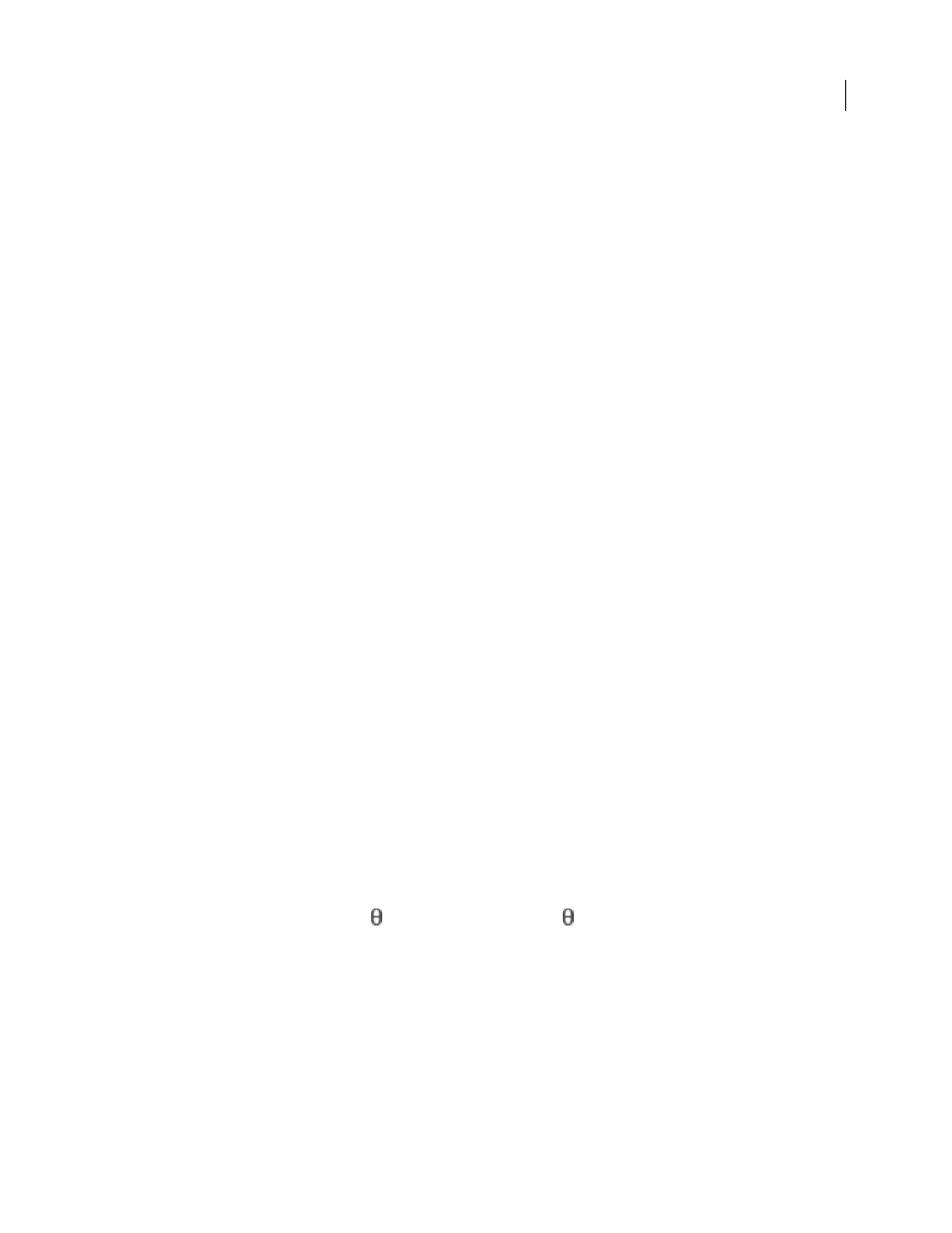Polar coordinates effect – Adobe After Effects CS3 User Manual
Page 416

AFTER EFFECTS CS3
User Guide
411
Reverse Lens Distortion
Reverses the lens distortion. For example, to remove wide-angle lens distortion, set Field Of
View to 40.0 and select Reverse Lens Distortion. Selecting Reverse Lens Distortion enables the Resize control.
FOV Orientation
The axis on which the Field Of View value is based. This setting is useful when matching computer-
generated elements to the rendered view angle.
View Center
Specifies an alternate center point of view. This setting is useful when using custom lenses that aren’t
centered. However, in most cases, this control should be left untouched.
Optimal Pixels
Maintains as much pixel information as possible through the distortion. When selected, FOV values
are no longer reversible.
Resize
Resizes the layer when the applied distortion stretches the layer beyond its boundaries. To use this control,
first select Reverse Lens Distortion, and then choose an option. Off doesn’t resize the layer. Max 2X resizes the layer
to a maximum of twice the original width and height. Max 4X resizes the layer to a maximum of four times the
original width and height. Unlimited resizes the layer as far as it is stretched. This option may require a large amount
of memory.
Add and match lens distortion with Optics Compensation
To match FOV values, layers must be the same size. However, if you select Resize, you can apply Optics Compen-
sation again and reverse the distortion using the same value (reversed). You can then apply another effect between
the two instances of Optics Compensation.
If you resize a layer using Optics Compensation and then precompose it into a larger composition, you cannot
reverse the distortion using the same value until you enlarge the precomposed layer to accommodate the expanded
layer.
1
Select the layer with the distortion, and choose Effect > Distort > Optics Compensation.
2
In the Effect Controls panel, adjust the FOV until a distorted edge or line appears straight. Note the FOV value.
3
Select the computer graphic layer you want to distort, and apply Optics Compensation to it using the FOV value
from step 2.
4
Select Reverse Lens Distortion.
5
Remove Optics Compensation from the footage layer.
Polar Coordinates effect
The Polar Coordinates effect distorts a layer by transposing each pixel in the layer’s (x,y) coordinate system to the
corresponding position in the polar coordinate system, or the reverse. This effect produces unusual and surprising
distortions that can vary greatly depending on the image and the controls you select. The standard coordinate system
specifies points by measuring the horizontal distance (x axis) and the vertical distance (y axis) from the origin. Each
point is specified as (x,y). The polar coordinate system specifies points by measuring the length of a radius from the
origin (r) and its angle from the x axis ( ). Each point is specified as (r,
).
This effect works with 8-bpc, 16-bpc, and 32-bpc color.
